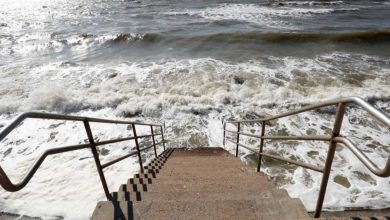How long do dunes last?
Established dunes may appear to be permanent fixtures in the landscape, but in fact they are a landscape of constantly shifting sand.
Wind gusting in different directions will blow sand from the dune either further inland or back onto the beach. Unusually high tides and storm surges wash it out to sea. Steady, day-to-day wave action pushes it back up onto the beach. Over decades, rising seas relentlessly move both the beach and its accompanying dunes landward.
What makes dunes appear immobile is that over time, these activities naturally tend to cancel each other out, creating relative stability. To understand how that happens, we need to follow the sand.
On the upper Texas Gulf Coast, the primary source of sand is the Mississippi River, which pours 1.8 million tons into the deep waters of the Gulf each year. What brings the sand to Texas is the longshore current that runs parallel to the state’s beaches. The current arises from the steady southeast wind that blows into the shoreline most of the year. As the resulting waves strike the beach at an angle they drive a flow of water along the shore that carries suspended sand with it.
The everyday waves that rush onto the beach have enough energy to propel some of the suspended sand up onto the shoreline but not enough to pick up the sand that’s there and drag it back out to sea. As the sand on the beaches builds up, the wind casts it into the dunes that rise behind them.
But what everyday waves give, heavy surf, storm surges and exceptional tides take away. Storm surges erode dunes. Heavy surf roils beach sand and carries it out to sea. And tropical storms break through and overwash dunes, flattening the landscape.
Eroded dune and beach sand doesn’t go far, typically accumulating in a series of submerged bars off the beach. You can see where they are by watching the patterns of breaking waves. Waves often will break once or twice far off the beach before crashing for the last time against the shore. Those lines of foam mark the position of offshore sand bars, where the water quickly becomes shallow before dropping off again. Waves break when the depth of the water is less than 1.3 times their height. When that happens, the bottom of the wave drags on the sea floor and slows while the top flows ahead, finally tipping over.
In the aftermath of a storm or period of heavy surf, sand slowly returns from the bars to the beach. After a minor disturbance, it can take months for a beach to reclaim its sand. After a hurricane, it can take years for dunes to rebuild, providing there is enough sand flowing in the system to support them.





